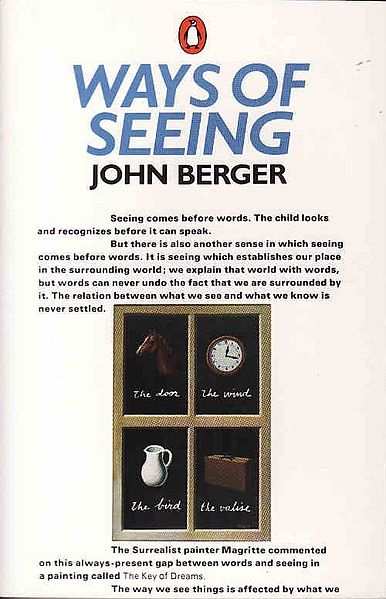Gender roles, the elusive promises of advertising, and what oil painting has to do with the publicity machine.
 Forty years ago this year, BBC premiered a series of four 30-minute films written and anchored by art critic and author John Berger. Soon adapted into a book, Ways of Seeing (public library) went on to become a landmark postmodernist critique of Western cultural aesthetics, exploring not only how visual culture came to dominate society but also how ideologies are created and transmitted via images — a subject of pressing timeliness in that golden age of photography.
Forty years ago this year, BBC premiered a series of four 30-minute films written and anchored by art critic and author John Berger. Soon adapted into a book, Ways of Seeing (public library) went on to become a landmark postmodernist critique of Western cultural aesthetics, exploring not only how visual culture came to dominate society but also how ideologies are created and transmitted via images — a subject of pressing timeliness in that golden age of photography.In the third episode of the series, Berger looks at oil painting and its formative role in the creation of consumer culture, showing that paintings are, before anything else, objects to be bought and sold, and admonishing that “we should be somewhat wary of a love of art”:
Berger writes in the book:
Publicity is the culture of the consumer society. It propagates through images that society’s belief in itself. There are several reasons why these images use the language of oil painting.The final installment in the series explores the world of advertising and its perpetual promise of an even-elusive alternative way of life, depicted through a language of words and images that never cease to seduce us.
Oil painting, before it was anything else, was a celebration of private property. As an art-form it derived from the principle that you are what you have. It is a mistake to think of publicity supplanting the visual art of post-Renaissance Europe; it is the last moribund form of that art.
This series began by considering the tradition of the European oil painting. It has ended by us looking at publicity images today. Because I believe that, in many respects, these images continue that tradition. I’ve been critical of many things in that tradition, of our culture, of some of the values which it celebrates, and I’ve illustrated my arguments by using the modern means of reproduction. But, finally, what I’ve show and what I’ve said, like everything else that is shown or said through these means of reproduction, must be judged against your own experience.But one of Berger’s most memorable and lasting contributions is the discussion of how media culture shapes gender politics and woman as object. Though the series was produced four decades ago — shortly after the Good Girls Revolt, a time of tectonic shifts for women’s rights — and much has changed since, it remains a priceless piece of cultural anthropology, as well as a stark reminder of how deep-seated some of our cultural conditioning is, and how much more is still to change if we are to transcend those burdensome bequests:
To be born a woman has to be born, within an allotted and confined space, into the keeping of men. The social presence of women is developed as a result of their ingenuity in living under such tutelage within such a limited space. But this has been at the cost of a woman’s self being split into two. A woman must continually watch herself. She is almost continually accompanied by her own image of herself. Whilst she is walking across a room or whilst she is weeping at the death of her father, she can scarcely avoid envisaging herself walking or weeping. From earliest childhood she has been taught and persuaded to survey herself continually. And so she comes to consider the surveyor and the surveyed within her as the two constituent yet always distinct elements of her identity as a woman. She has to survey everything she is and everything she does because how she appears to men, is of crucial importance for what is normally thought of as the success of her life. Her own sense of being in herself is supplanted by a sense of being appreciated as herself by another….One might simplify this by saying: men act and women appear. Men look at women. Women watch themselves being looked at. This determines not only most relations between men and women but also the relation of women to themselves. The surveyor of woman in herself is male: the surveyed female. Thus she turns herself into an object — and most particularly an object of vision: a sight.Ways of Seeing is part The Century of the Self, part Christ to Coke: How Image Became Icon, and wholly recommended in its entirety.
 Brain Pickings has a free weekly newsletter and people say it’s cool. It comes out on Sundays and offers the week’s best articles. Here’s what to expect. Like? Sign up.
Brain Pickings has a free weekly newsletter and people say it’s cool. It comes out on Sundays and offers the week’s best articles. Here’s what to expect. Like? Sign up.

No comments:
Post a Comment